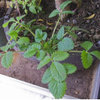Quackgrass problem!
fernisland
17 years ago
Featured Answer
Sort by:Oldest
Comments (6)
Judy_B_ON
16 years agoKimmsr
16 years agoRelated Professionals
Surprise Landscape Architects & Landscape Designers · Clark Landscape Architects & Landscape Designers · Hershey Landscape Architects & Landscape Designers · Norton Shores Landscape Architects & Landscape Designers · Palm Springs Landscape Architects & Landscape Designers · Rancho Cordova Landscape Architects & Landscape Designers · Salisbury Landscape Architects & Landscape Designers · Signal Hill Landscape Architects & Landscape Designers · Woodinville Landscape Architects & Landscape Designers · Choctaw Landscape Contractors · Fort Atkinson Landscape Contractors · Harvey Landscape Contractors · Rockland Landscape Contractors · Tacoma Landscape Contractors · Tinton Falls Landscape ContractorsJAYK
16 years agoclarksons
13 years agoKimmsr
13 years ago
Related Stories

GARDENING GUIDESSolve 3 Common Landscape Problems — With More Plants
Sometimes the best defense is a good offense
Full Story
GARDENING GUIDESWeed War: When and How to Use Chemical Herbicides
Before you spray, arm yourself with knowledge about which weed killers — natural or synthetic — are right for your yard
Full StorySponsored
Industry Leading Interior Designers & Decorators in Franklin County
More Discussions







Beeone